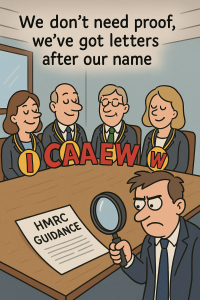We live in an age of information overload. Reports, studies, and statistics are thrown at us from every direction—social media, news outlets, corporate press releases—all claiming to reveal the truth about the world. But before you take any report at face value, there’s one crucial question to ask: Who paid for it?
The Power of Funding Influence
Money talks, and in research, it can whisper or shout. The entity that funds a study often has a vested interest in its outcome.
A pharmaceutical company isn’t likely to sponsor research that highlights the dangers of its best-selling drug.
A fossil fuel giant funding a “balanced” study on climate change? That’s a red flag.
A study like this leaves me with all sorts of questions as to its motives, when viewed alongside all the lawsuits coming up against social media platforms.
https://techxplore.com/news/2025-03-unofficial-parental-apps-children-safety.html
The Art of Subtle Manipulation
It’s not always about outright fabrication—sometimes, bias is baked in through methodology, sample selection, or how results are interpreted. Consider:
- Studies where data is cherry-picked to support a conclusion.
- Research with carefully worded findings that downplay risks.
- Reports that emphasize minor benefits while glossing over major drawbacks.
- Studies that make parents consider smaller dangers compared to the benefits of installing software that moderates their children’s ability to go on certain sites, the amount of time they spend online etc.
Sponsored Science vs. Independent Research
Independent studies, particularly those peer-reviewed and conducted by academic institutions with no financial stake, tend to be more reliable.
Meanwhile, industry-sponsored research often carries an agenda—whether it’s selling a product, swaying public opinion, or influencing policy decisions. That’s why disclosure of funding sources is critical. In particular, be very sceptical of reports based on an individual’s “opinion”; in a court of law, this could be deemed to be “speculation”
How to Read Reports Like a Skeptic
Before accepting a study’s conclusions, take a moment to:
- Check the funding source – Is the report backed by an unbiased entity or an organization with something to gain?
- Look for conflicts of interest – Are the researchers affiliated with the sponsoring company?
- Compare with independent research – Do other reputable studies support the same findings?
- Examine the methodology – Are the sample sizes, data collection, and interpretations transparent and sound?
- Watch out for media spin – Sensational headlines often misrepresent study conclusions.
The Bottom Line
Not all sponsored studies are inherently misleading, but being an informed reader means knowing when to question the motives behind the research. A healthy dose of skepticism can save you from falling for biased reports designed to shape opinions rather than uncover objective truths.
So, the next time you see a flashy statistic or a ground-breaking study making the rounds, don’t just ask what it says—ask who is saying it and why.
Photo by Roman Kraft



